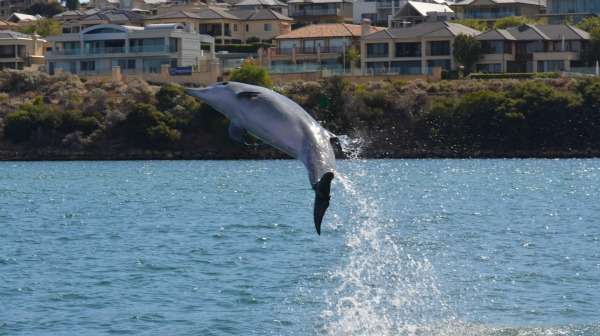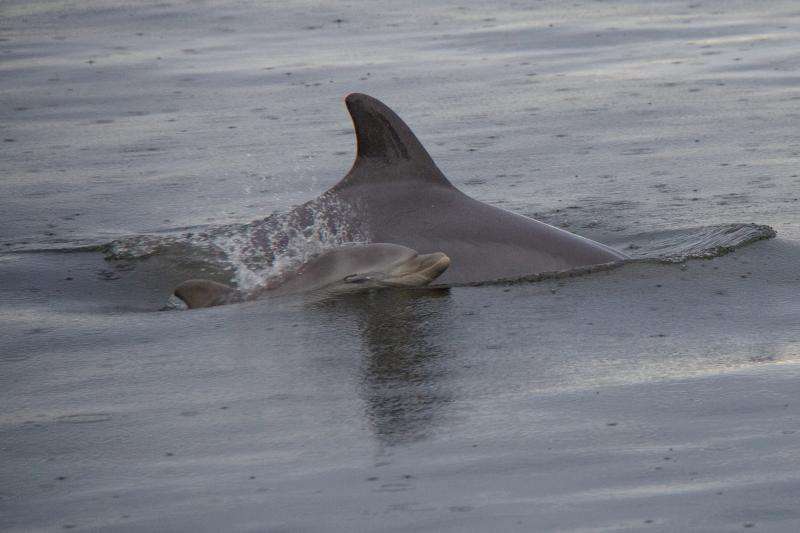The Riverpark’s dolphin community is small, dependent on a handful of females and living in a stressful urban environment. Credit: Delphine Chabanne
Dolphin Watch, one of Western Australia's premier citizen science projects, focuses on one of the Swan Canning Riverpark's most iconic species; Indo-Pacific bottlenose dolphins (Tursiops aduncus).
As these dolphins are important indicators of river health, Dolphin Watch monitors the movements, behaviours and individual traits of approximately 42 of the Riverpark's resident and visiting dolphins, to better understand dolphin ecology, their role in the Swan Canning estuary ecosystem and their interactions with the Perth community.
Dolphins playing in the rivers are an iconic and much loved sight in Perth but it seems the mammals' habitat and community could be at risk.
The Riverpark's dolphin community is small, dependent on a handful of females and living in an urban environment which places a lot of stress on the mammals.
Pressures from loss of habitat, increased river usage by boats and other motorised vessels, climate change, entanglement, boat strikes and noise all impact the community.
Since Dolphin Watch was launched in April 2009 by the Department of Parks and Wildlife in partnership with Murdoch and Curtin University's Coastal and Estuarine Dolphin Project, the program has trained over 1000 people in the monitoring of dolphins, and now has over 850 active volunteers who have logged more than 17,500 reports.
This community involvement has helped unlock some of the mysteries of our resident dolphin population, such as how dolphins use the Canning and upper reaches of the Swan River – areas that experience problems such as low dissolved oxygen levels and algal blooms.
Volunteers record information such as the number of dolphins sighted and the presence of a calf. Photo credit: Sarah Guiton
Dolphin Watch volunteers learn how to monitor dolphins, with basic observation techniques and how to 'observe but not disturb'.
Shore-based observations are ideal as volunteers can observe animals closely without the dolphins knowing they are present.
The new Dolphin Watch smartphone App enables volunteers to contribute valuable observational and photographic data to Murdoch and Curtin universities' Coastal and Estuarine Dolphin Project.
This helps to protect and manage the long-term future of the dolphins, and influences development of sound river management strategy and policy.
Those who wish to lodge sightings of dolphins observed in the Riverpark can download the Dolphin Watch smartphone App from the iTunes or Google Play store.
Provided by Science Network WA
This article first appeared on ScienceNetwork Western Australia a science news website based at Scitech.

























